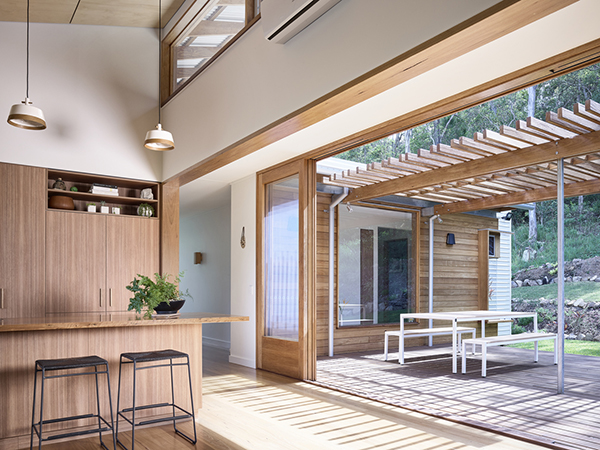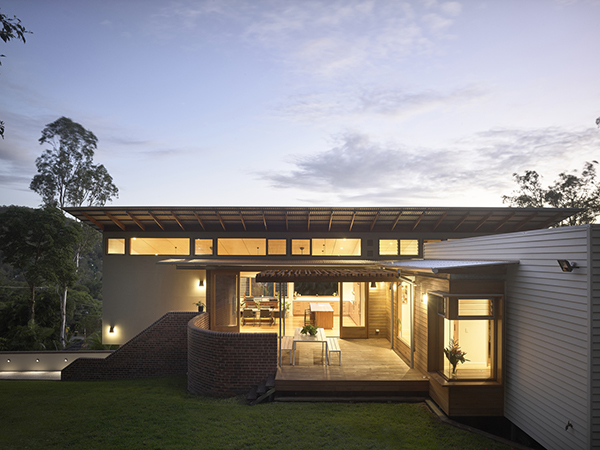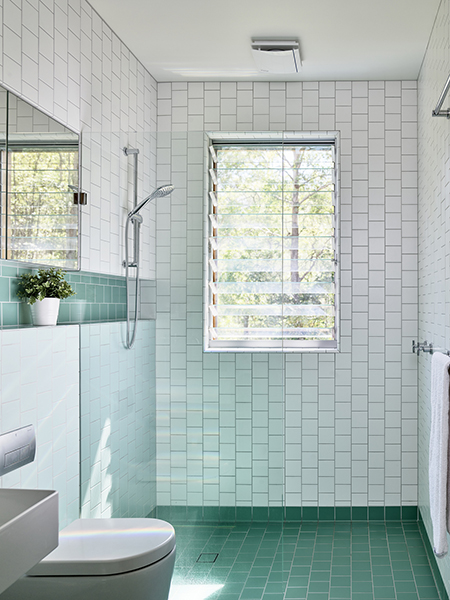From the architect:
An in-depth understanding of the site and its characteristics was the starting point for the design of this home.
Pedestrian entry takes precedence as one arrives along a crafted brick path that rises from the street level to the front entry. The gentle arc of the brick wall that frames and grounds the deck, reflects the contours of the land and provides a welcoming arrival. Through the use of large windows and doors, moving about the home becomes a joyous engagement with landscape.
The incorporation of well-considered passive design principles means that air-conditioning is rarely required. The quality of light that permeates the home and a transparency of spaces celebrate the ambiguous distinction between interior and exterior, resulting in a curated calmness within the architecture.
The earthy tonality of the brickwork was carefully selected to reflect the colours of the land. Sustainably and locally sourced blackbutt timber is used in key areas where it provides textural warmth.

The clients, a retired couple with adult children, provided a brief centred around the creation a comfortable (albeit compact) home that would take advantage of the views and breezes of the elevated block of land, which is a carved off 500m2 section uphill from the couple’s original property. The practical requirements included the number of bedrooms and bathrooms, but the emotive brief included designing for light and transparency.

Because the site has a unique microclimate that differs from broader Brisbane climate, an in-depth analysis and understanding of its specific characteristics was required in the first instance.
Being located on Brisbane’s city fringe, backing onto extensive bushland, the house also had to address vegetation and bushfire overlays through innovative design solutions. In some places it embeds itself within the landscape it occupies, whilst in others it floats lightly above the ground.
The design evolved to provide a specific climatic response by harnessing local breeze patterns and orientating towards a northern aspect up the hill for advantageous winter solar gain. The resulting “L” shaped plan addresses the desirable north eastern aspect, harbouring a courtyard that enjoys breezes and views through the house.
This slender elongated living platform achieves the dual purpose of allowing generous light penetration and with a narrow girth, facilitates fantastic cross ventilation. The roof pitch parallels the fall of the land, opening up to the higher northern elevation where high louvres vent rising hot air.

A generous eaves overhang has been calculated to allow penetration of subtle winter sun but shield from intense summer heat.
Images: Supplied / Scott Burrows

